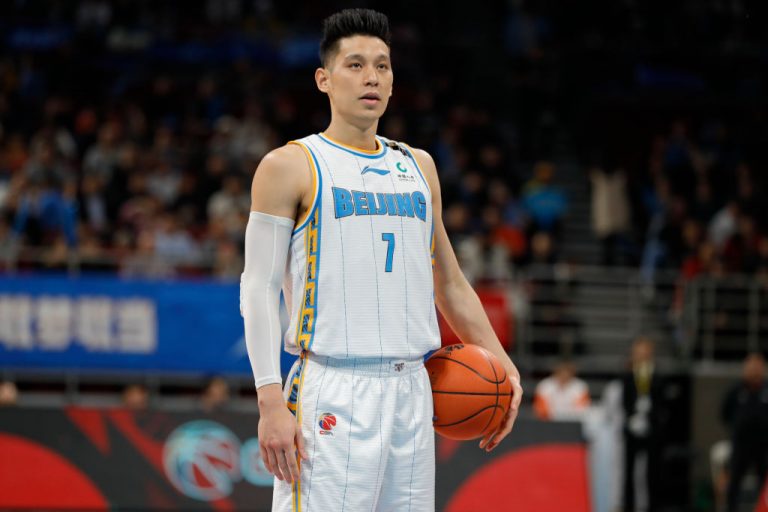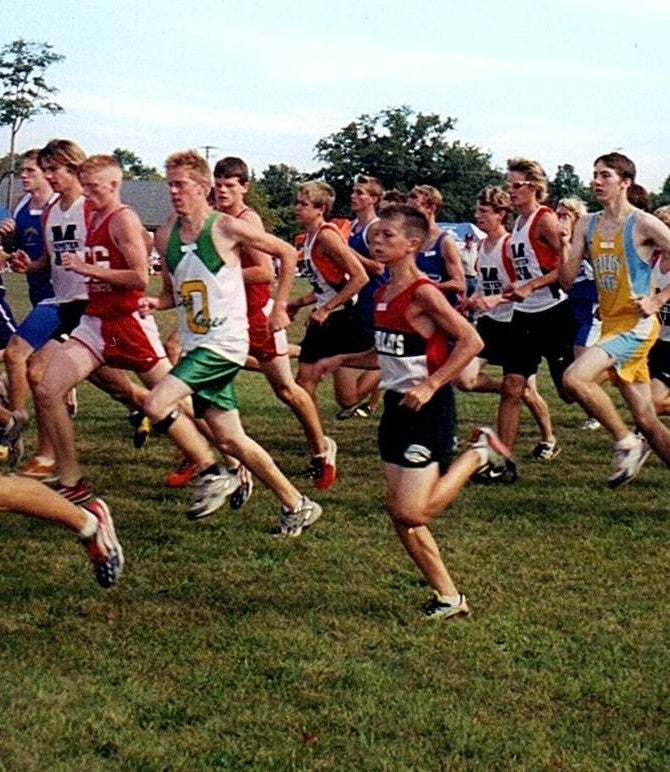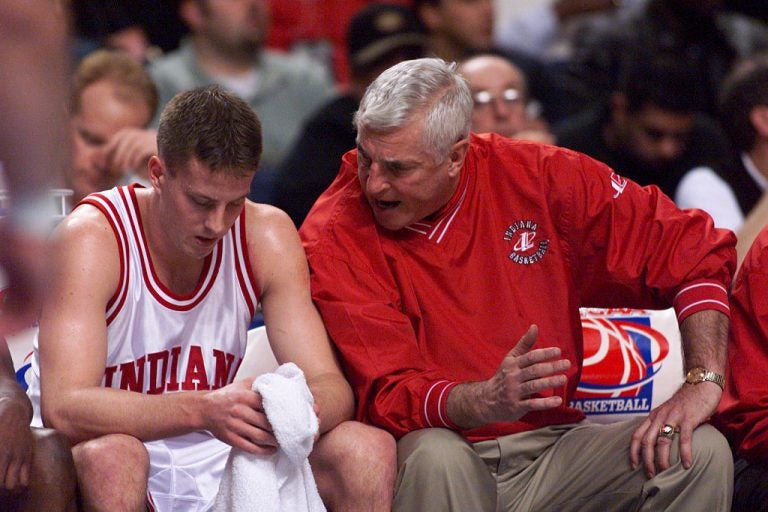Nature and Nurture, Body and Mind
Why this matters
Whether positively or negatively, our bodies help shape our identity throughout our lives. We have lots of choices about our appearance and whether we play sports, but nature and physical development can challenge us. As a result, our relationship to our bodies and athleticism can affect our psychological wellbeing, competitiveness, and more.
It was like a fairy tale. I went to bed one night as the lovable and/or forgettable sidekick without a romantic interest. The next morning, I woke up to a whole new world where everyone suddenly found 19-year-old me charming and extremely good-looking. I was the star of a Disney film spliced with “The Bachelor.”
The end. Cue credits.
Now for the Brothers Grimm version. Instead of fairy dust or a villain’s dark magic, the cause of this sudden transformation was developmental and social psychology. And my story wasn’t over, because psychological processes don’t end at 19.
In fact, things got dark for a while.
But let’s back up. I had delayed puberty, which doctors call constitutional growth delay (CGD). Dr. Joel Hahnke, pediatric endocrinologist at Banner Children Specialists in the Phoenix, Arizona, area, uses the terms “CGD,” “delayed puberty,” and “late bloomer” interchangeably.
“Basically, it means your body is programmed to have puberty develop later than average, and it’s a variation of normal development,” he says. “We recognize this as a common thing. It tends to run in families.”
In boys, the onset of puberty typically occurs between 9 and 14 years of age. The anterior pituitary gland releases growth hormone, luteinizing hormone, and follicle-stimulating hormone. These hormones catalyze the production of testosterone and the development of peak muscle mass, bone growth, a lower voice, mature facial features, and hair follicles – in short, most of the physical attributes that distinguish men from boys.
Due to genetics, however, puberty started later and happened more gradually for me than for my peers. While I was a relatively extreme case, I didn’t have a disorder. My uncle and cousin had similar experiences.
As you might guess, delayed puberty didn’t just impact my body (as seen in the image above of a competition in high school). It had a profound effect on my identity.
'He’s sooooo cute!'
When I started high school, I looked like a fifth-grader. People saw me as the “cute little brother” type of friend. Consequently, that’s how I saw myself – even though I didn’t like it.
For example, at a track practice my freshman year, a very athletic junior girl looked at me and exclaimed, “He’s soooo CUTE!” in front of our entire team. Of course, that’s not what a 15-year-old boy wants a barely older girl to say about him. Right words. Wrong tone. Looking back, I’m sure Jessica didn’t mean to reinforce and publicize the power my delayed puberty had over me and how I should perceive myself. But unwittingly, she did. I was “soooo CUTE.” Just not the brand of “cute” she would ever date.
Related: Transforming the Question of How an Athlete's Psychological State Influences Their Performance
At least I could compete in track, though. I had quit high school basketball after a couple of practices because I was too small and weak to effectively compete against my peers. I felt like my body was letting me down and drawing attention to my biggest insecurity. By giving up the sport, I lost what was arguably my most popular social group, which mattered a lot when I was 15.
Even when I hit puberty and my body developed toward the end of high school, my identity was already cemented to my peers and me. But that was about to change.
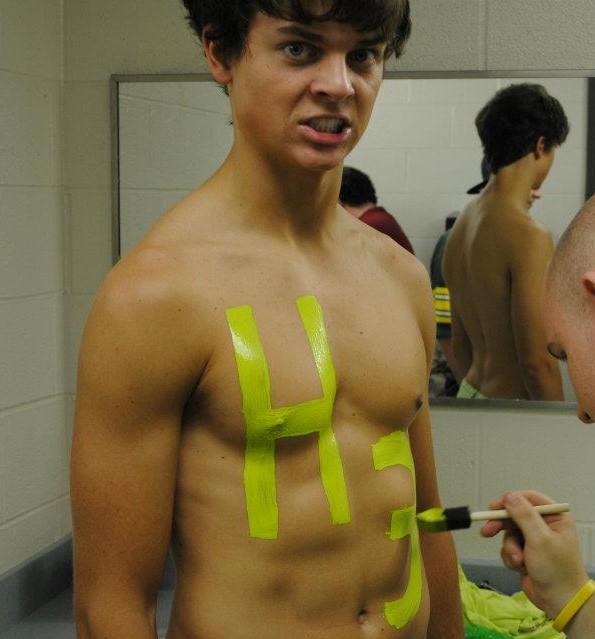
'Can that be me?'
As soon as I started college, people talked about my body in ways that took me completely off guard.
I was still lean. But now I was also very toned – and stood over six feet tall. My new peers dubbed me attractive and eligible, mainly due to a great physique that I didn’t recognize until they pointed it out.
That isn’t me, I thought.
Wait. Can that be me?
OK, that’s me. Awesome!
This “great body” identity was entirely new and unexpected, but it was infinitely more appealing than who I was before. So I went all-in on reinforcing and maintaining it. I was, as my college friend Rob Hahn later told me, “always doing push-ups. For [campus events], you were always the first person to take your shirt off and paint up. … It wasn’t like you were flaunting. You just seemed comfortable. … It was part of your identity. It was the guy who was going to do a thousand push-ups today.”
Rob is exaggerating. But not by much. Almost every day for four years, I would do either 250 push-ups or 300 sit-ups. Once, during an annual event that challenged participants to do 3,000 push-ups in 12 days, I did 10,000.
Afterward, my shoulders ached for three weeks.
Escaping a Trap
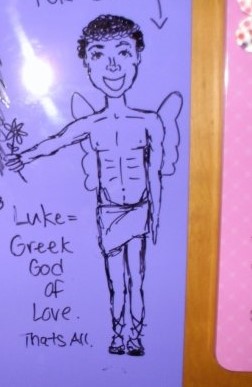
I liked my new identity. Eligible bachelor with a great body. Sometimes, that felt awesome. So did the positive attention that came along with it. My college peers had provided me with a highly desirable persona. I certainly didn’t feel bullied for being told I was ripped, or victimized when another student drew a sketch of me on my girlfriend's dorm door message board with a caption reading LUKE = GREEK GOD OF LOVE.
Over time, however, those warm feelings waned. I began to feel trapped by how others saw me – and by how I saw myself. Looking back, I know that I overestimated how much people cared and paid attention to my body, but, to some extent, they really did. That could mean flattering comments. It also could mean scrutiny. One night during finals week when I hadn’t worked out for several days, a friend said, “Wow, looks like you’re letting your abs go a little bit!”
He immediately regretted it and offered self-deprecating humor about his own body, but I got the message: We’re looking, and we notice the details. When I ran around with a painted torso at campus events, I didn’t do it to proclaim, “Look how impressive my abs and pecs are!” I did it to ask, “I’m upholding your expectations, right?”
It wasn’t until I graduated from college and moved across the country that I released myself from the trap. No one knew my previous identities. I wasn’t soooo CUTE. I wasn’t a Greek love deity. I was just myself. Within a few months, I stopped doing push-ups; I had started playing beach volleyball, and push-ups hurt my arm swing. I prioritized what I enjoyed over muscle tone. A new colleague commented that I “looked thinner” compared to a photo on Facebook from college.
I replied, “You mean I’m not as muscular, right?”
“Um, yeah, I guess.”
“Yep,” I said. “I used to work out just to be muscular, but I hated it. So I don’t anymore.”
Our Bodies, Our Identities
Most people never go through delayed puberty. But at some point in their lives, everyone experiences the powerful and influential connections between the body, the ways it’s used, and identity. I’ve spoken with experts to peel back the layers of my experience – and, in the process, I’ve picked up some valuable insight into how all of us are affected:
Our communities shape our developing sense of self: I dove head first into my college identity without much thought. Why? “As adolescents, we are not so sophisticated,” says Dr. Dawn DeLay, Assistant Professor of Developmental Psychology and Social Relationships at Arizona State University. “We may not have the cognitive capacity yet to really say, ‘Who am I?’”
Particularly in adolescence, surrounding cultures and contexts matter greatly. I attended a very small university in the Midwest. One of the school’s unwritten goals was to make every new student feel like a known and valued part of the community by highlighting positive qualities about them. My quality was based on being seen by others, often without a shirt.
“We don’t really decide what our identity is,” says Dr. Justin Jager, Associate Professor of Developmental Psychology at ASU. “It’s really a dual-negotiation between ourselves and how others see us. We have some say, but we can’t just be whoever we want.”
Identities can be hard to let go of, even when they’re not working: I was still a college freshman when I started feeling trapped by perceptions of my body. I could have said, “Screw this. I’m done.” But, instead, I willingly maintained that identity and the behaviors that went with it – even though I likely overworked my rotator cuffs and, given a family history of shoulder issues, may have caused permanent damage.
“It wasn’t just others, because you came to say, ‘This is how I get valued and accepted,’” says Dr. Sharon Robinson Kurpius, Professor of Counseling Psychology at ASU. “What others were saying unexpectedly about you, you started to say it about yourself.
“That became the trap. For women, particularly teenage girls and young girls in college, how they look becomes so important to their perceptions of how people are judging them or valuing them. So they start doing it themselves. They start objectifying their body. It’s not healthy, but it’s part of the maturation process. I think for some it continues their whole life.”
Life transitions are a time for redefinition: Sometimes I wonder if it would have been good for me to get injured in college - something like a broken leg. I don’t wish it had happened, but it would have provided an excuse - mostly for myself, but also for others - to let myself go a little bit.
Hearing this, DeLay says, “I agree. What it would have been is an opportunity for a reset. ‘There’s a transition into where I broke my leg. What can I do in this context?’ There’s this period of stress and strain, but that could have been an opportunity for you to say, ‘Ok, I don’t really have to attach my identity to my physique in order to be OK.’”
Related: When Asian American Athletes Succeed In Breaking 'Model Minority' Stereotype, Their Mental Health Can Suffer
My transitions to college and post-graduate life provided 180 degree turns for how my body and identity worked together. This is common. Adolescents and young adults undergo several major transitions, all of which can serve as powerful opportunities to reset their identities and explore new interests.
During these times, Jager says, people explore who they are in two ways: breadth and depth. “Early high school, you have no idea what you are, so you explore all kinds of things,” he says. “You become a golf kid, for example. … That’s exploration and breadth in the sense that all you’re doing is exploring. You have made no commitments of any kind.”
The exploration and depth phase, he says, occurs when people more firmly commit to something and “live in that identity for a bit. If it doesn’t fit, you move to something else. But you don’t completely reinvent yourself.”
Jager also explained that the jarring depth of my college transition was somewhat akin to the experiences of racial minorities and/or LGBTQ students, who often feel like their high school identities don’t fit within their college contexts. Constructively renegotiating in such depth is difficult, and poor decisions are inevitable. “It’s hard work,” he says. “Our identity is like a quilt of a bunch of different squares that you’re putting together. Each square is a little part of how we are. If one square is completely re-evaluated, it affects everything, and you have to weave it back in.
“In many ways, that’s what identity is during adolescence. We have these pieces of ourselves, and we don’t yet have them integrated into the whole sense of what that means.”
Growth Opportunities
I’ve never made a quilt. But I get the analogy. Largely because of how my underdeveloped body affected my athletic ability and identity in high school, my physical identity was a central square of my quilt in college. I attached so many other squares to it that ripping it out would have left a gaping hole and loose ends flapping in the breeze, threatening the existing structure of the entire quilt.
That’s why I felt so trapped and why I did endless push-ups and sit-ups. I had made my physical self central. Renegotiating who I was in relation to my body meant renegotiating almost everything else about me. That can be a terrifying prospect. It takes time and work, Jager says, to find and calibrate an identity that integrates all the pieces of our personal quilts. It usually means making mistakes.
But that’s also how we grow. So it’s worth asking: Are you embracing an identity or engaging in behaviors today not because they fit or are healthy, but because they’re the opposite of something you used to resent about yourself? Are you living according to others’ expectations for your body, your abilities, or any other part of your identity? If so, do they motivate behaviors that you enjoy - that are good for you? Or, do you feel trapped in them?
Does your quilt look like who you want to be? It might take a lot of sewing, ripping apart, reimagining, re-sewing, and touching up, but it’s worth the work.
Monthly Issue
Beyond the Binary in Sport
The spectra of sex, gender, and sexuality challenge our traditional understanding of sport and competition, but are increasingly central to the conversation around athlete and fan experience.
With legislation and organizing increasing around how these various identities intersect, sport makes a natural landscape for discourse and broadening our knowledge of these conversations. How are perspectives changing, and what can we discover by diving into the multitudes underneath these nuanced topics?
Related

